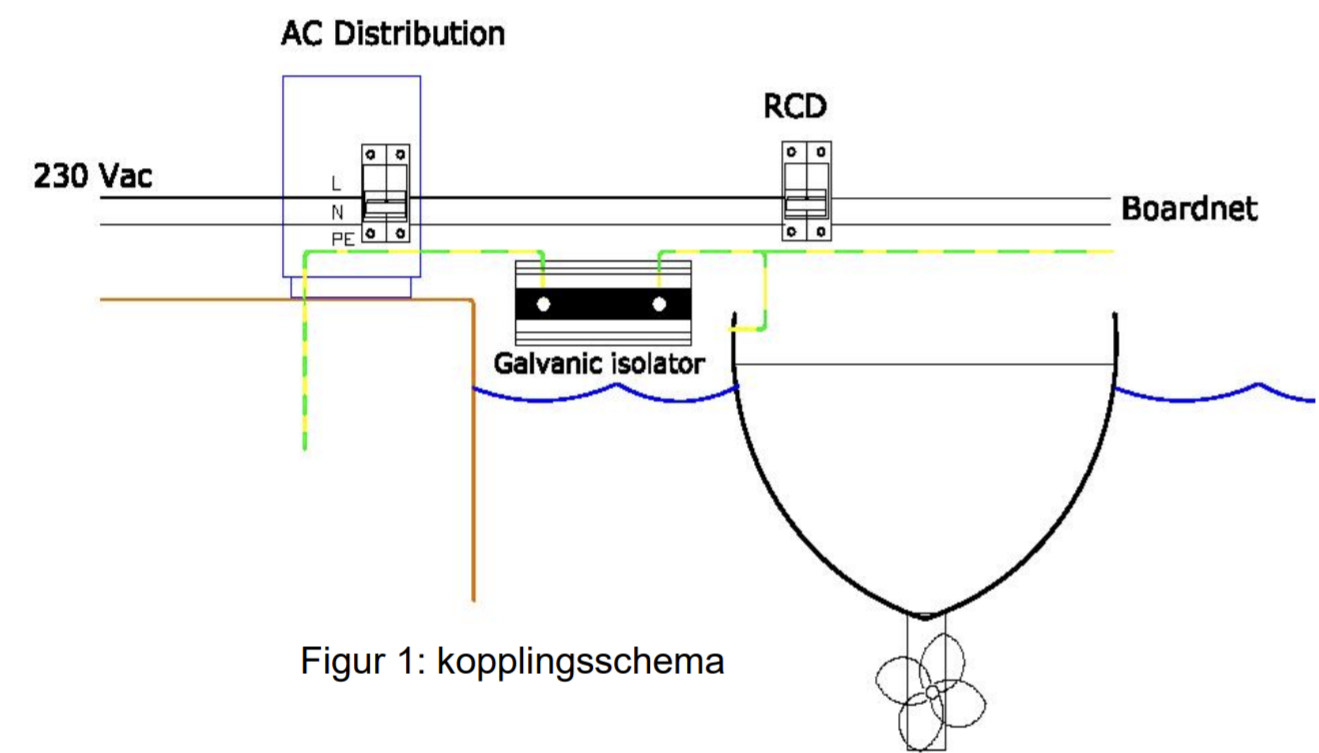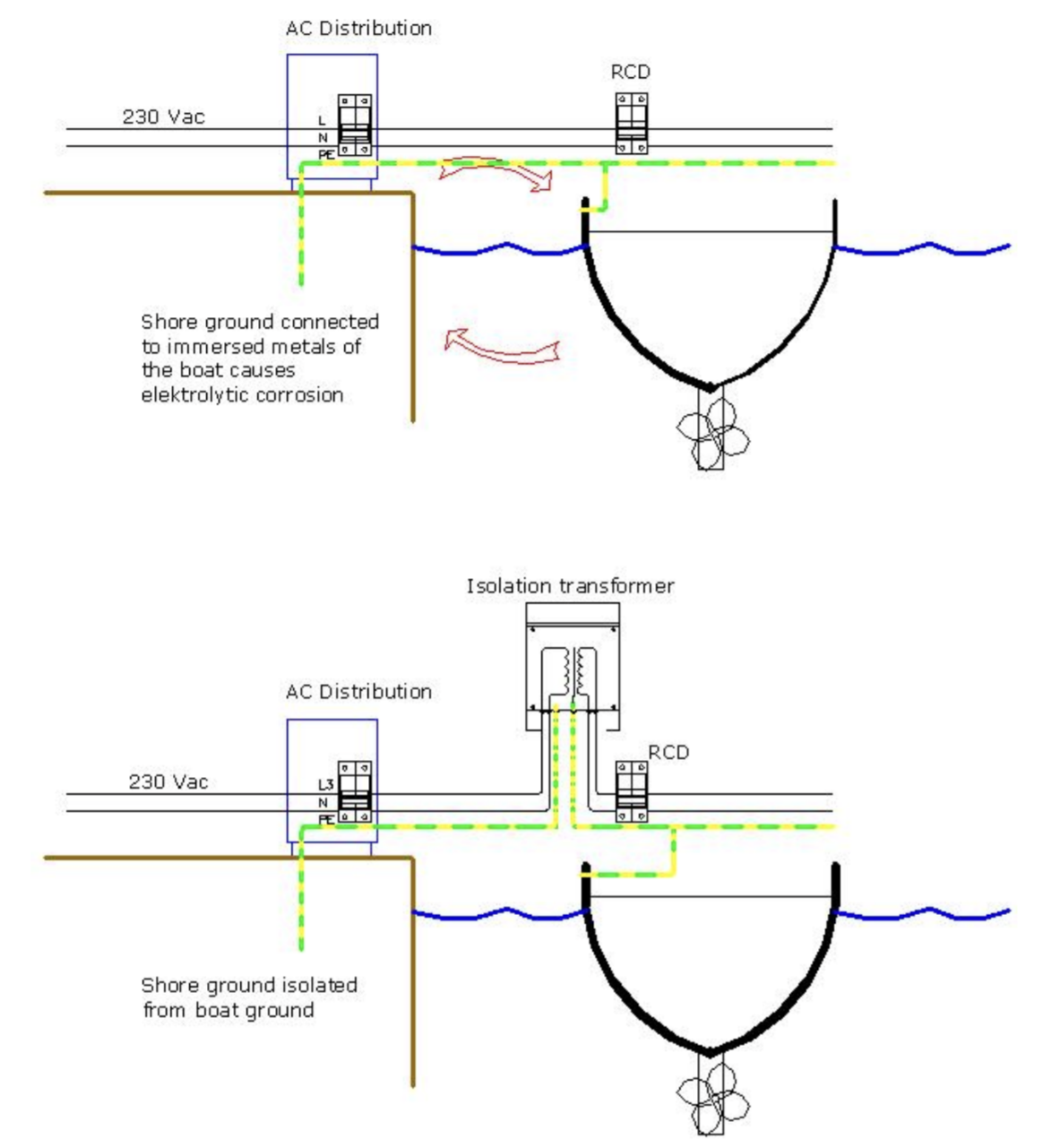Cart
Discount: 0.00 CZK
Discount: 0.00 CZK
Digital Skipper |27/01, 2022

Corrosion on boats is a serious problem that can destroy metals such as propellers, stern drives, and rigging – sometimes in just a few weeks. In this guide, we explain why galvanic currents occur when connecting shore power and how you can protect yourself.
Galvanic AC current arises between ground/PE on land and ground/PE on board, i.e., when shore ground meets the boat's ground/water. Galvanic DC current is created by different metals on board in combination with the boat's DC current.
A voltage difference (potential difference) between the boat's 230V ground and the transformer station's ground can cause uncontrolled currents. The difference varies between harbors and can sometimes be as high as 20–50V, although the most common is under 2V.
We cannot influence the potential difference, but we can break the ground circuit between the boat and the shore power connection. This is done with a Galvanic isolator or an Isolation Transformer.
NOTE! Never remove the protective earth – it is dangerous and forbidden!
A galvanic isolator blocks low AC currents and prevents electrolytic corrosion. It is installed directly behind the boat's 230V plug and consists of two anti-parallel diodes that only conduct current at a higher voltage threshold. In case of fault voltage, current conduction is allowed and the residual current device trips.
See our range of galvanic isolators

An isolation transformer is indispensable in professional marine electrical systems. It prevents galvanic corrosion, protects against lightning strikes and power surges, and handles high potential differences. Some models can also transform between 230V and 115V.
See our range of isolation transformers
